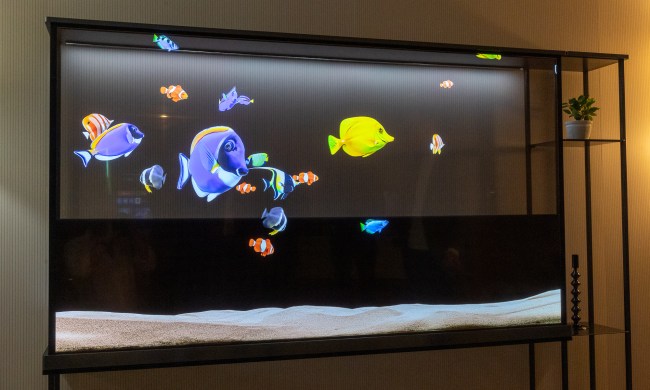LG Display is already known for its OLED screens, seen on some of the most stunning televisions around, and also on the new LG V30 smartphone. However, it is also utilizing OLED technology in lighting, and each of the unusual lamp lights you see here basically operates like a single OLED pixel ripped from your OLED screen, and then enlarged many times over. The result is a lamp that provides a beautiful soft light in a flexible style, and that will last for years and years.
This isn’t the first OLED lamp LG has promoted. The last came from LG Electronics in 2014, and was a basic concept of a potential consumer product. Now, it’s LG Display, which sells components and hardware to other manufacturers — while LG Electronics sells products to you and me — that has taken charge of the project.
During these last few years, the technology behind the OLED lamp has evolved considerably. It was initially made using a second-generation production process, but is now made on more efficient fifth-generation production lines.
The super thin OLED panel is covered in plastic, so it’s very flexible. LG Display is making three different light panels; a square version, and two oblong versions with different lengths. The wattage is higher than the earlier 2014 version, and the lifetime of the light has been extended. LG Display showed the lights at the London DesignJunction show, and told Digital Trends the oblong versions should return between 30,000 and 40,000 hours before the light deteriorates to the point where it can’t be used. That’s more than 13 years of use at ten hours a day. Realistically, the driver unit will stop working before the light does.
Like other LED lights, the color temperature can be adjusted to suit the environment, time of day, or use. The flexibility also offers plenty of creative opportunities for design. It’s not just in the home where we’ll likely see these lights, either. LG Display is working with car manufacturers to incorporate red and amber versions into tail lamps.
LG Display isn’t responsible for getting these lights on sale, and while early examples of consumer products are out there to buy now, the fifth-generation OLED lights seen here will be ready for full production early next year.



